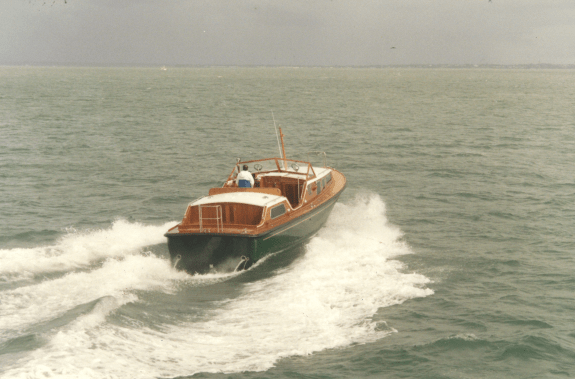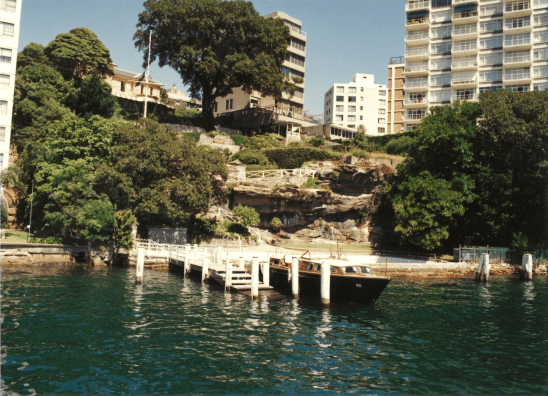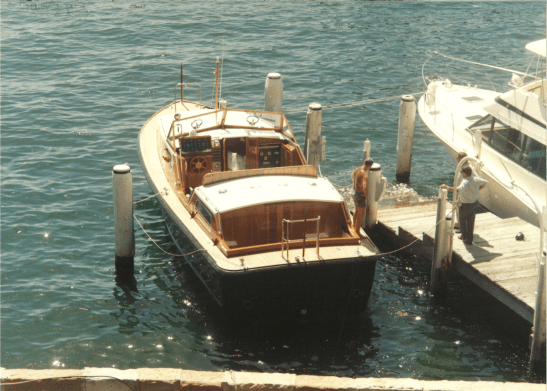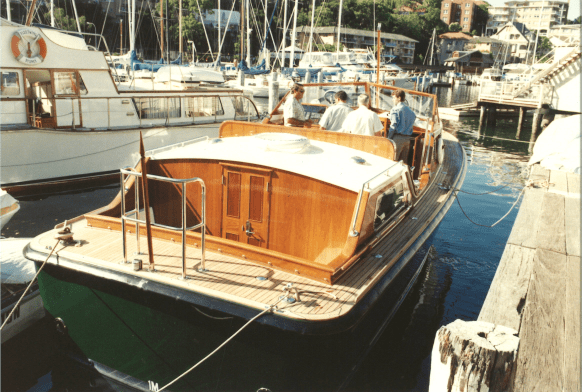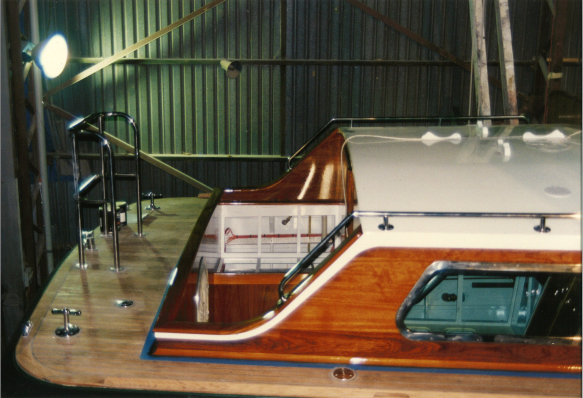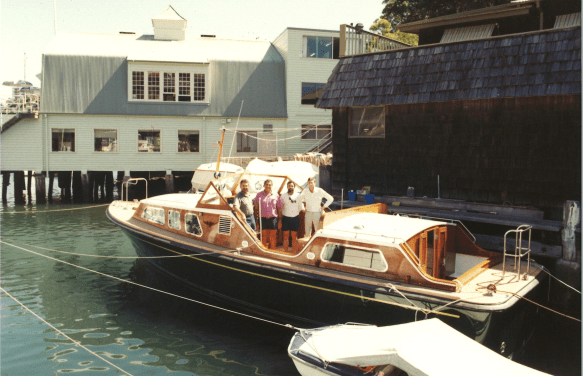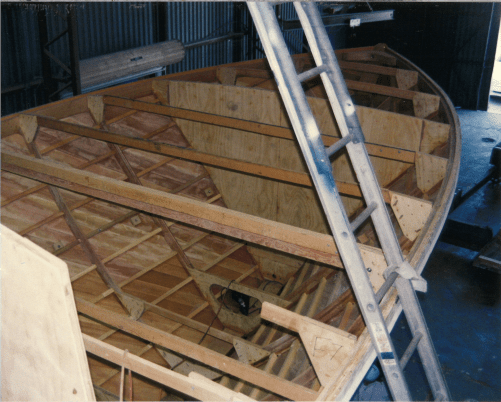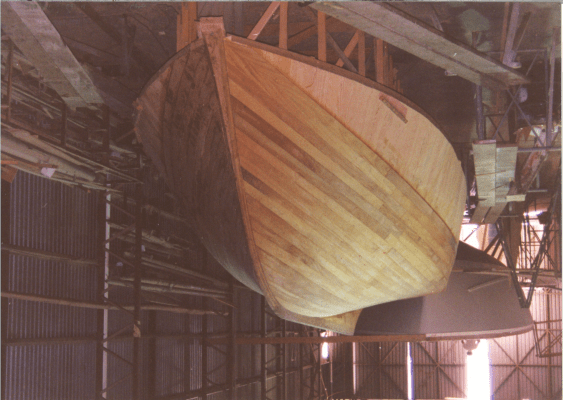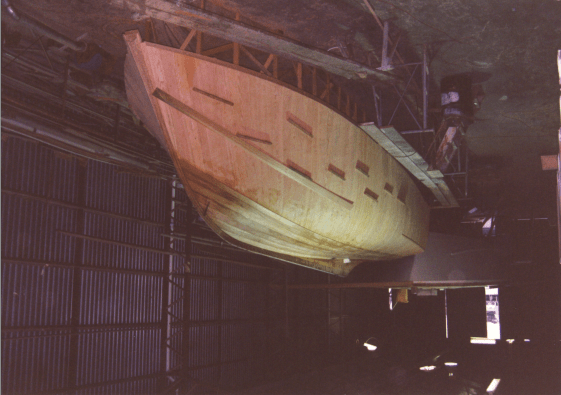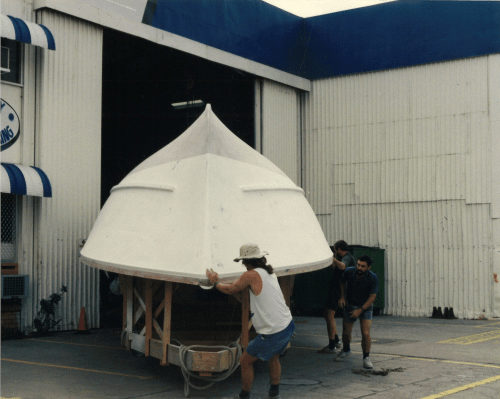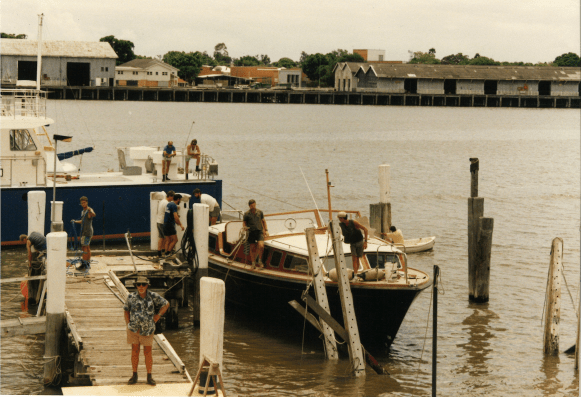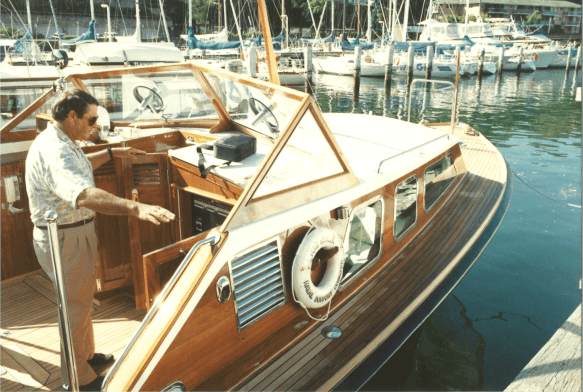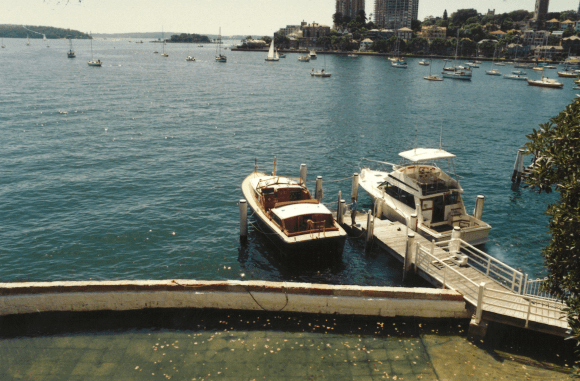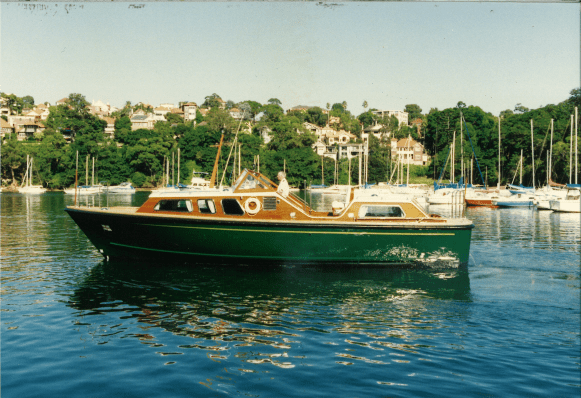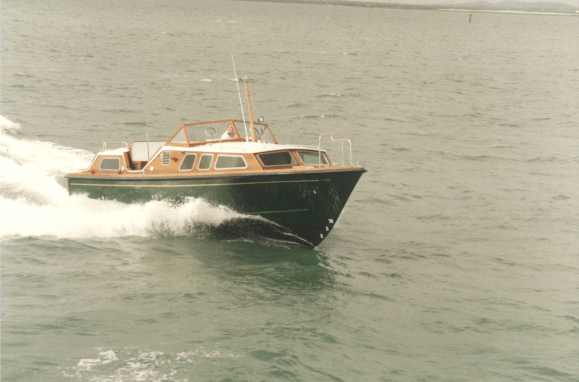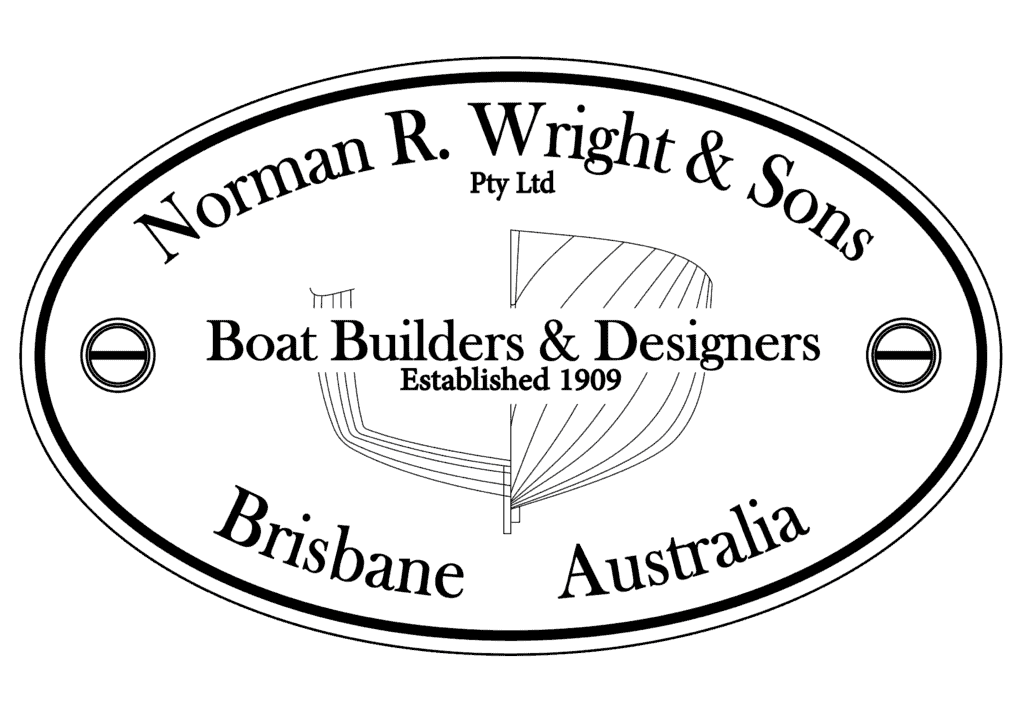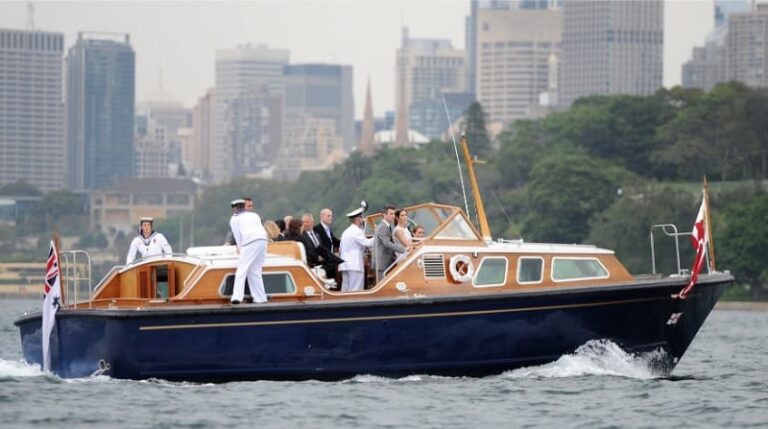The stability test was to happen the next night! Yes, we do all of our stability tests or what we call an inclining experiment at high tide, so we have slack water. The high tide just happened to be at 6.30pm. Ben arrived to watch the experiment and also, to my surprise, my old nemesis Walker. He insisted to Ben that he witness the inclining experiment.
To do an inclining experiment we set up a number of 25kg ingots at a set point near maximum beam and then move the mass from side to side, each time measuring the inclination of the vessel in degrees. In this particular case we had 400kg of ingots on each side of the vessel. Normally an apprentice assists me with moving the weights from side to side but to my surprise Ben told me that I should sit with him and let Walker move the lead ingots for me, leaving me just one job that was to measure the inclination after each movement of weights.
I was smiling deeply as Walker huffed and puffed moving the weights. I am sure he was cursing us as we sat and watched. At the completion of the inclination experiment I thanked Ben and Walker for their assistance. Walker was totally stuffed and angry. Little did I know that on the inside he was plotting his revenge.
The next day we had the boat ready for sea trials. Fuel and water tank full, complete crew of myself, Lex Baddiley (Engineer), Paul Smallwood (Electrical), Ben, and the Perkins Engineers. As we steamed to the bay the weather was clear but a strong southeast wind had sprung up early catching us by surprise. By the time we arrived at the Measured Mile beacons for our speed runs, the wind was gusting up to 18 knots, which in turn had stirred up a 1 to 1.5m short steep swell. Hardly the perfect conditions for running the Measured Mile. Ben thought the conditions were perfect, a real test of the boat, he said. I had to agree with him, it was going to be a real test of the little boat.
Off we went, Lexy steering as usual, I was time keeping with Ben. We started off at 1200rpm and then worked our way through the rev range recording the revs, speed, fuel usage and trim at each of the set revolutions. It was a bit bouncy, but the Admiral’s Barge just sliced its way magnificently through the water. I was silently impressed, Lexy had a huge smile on his face and Ben, well, Ben was grinning from ear to ear. On the final two runs at maximum RPM we recorded a speed of 20.8 knots. Well above our contract speed of 20 knots especially when the weather conditions were considered.
I was one happy and relieved person. We then set off on a 6-hour endurance run. No problems, the boat performed very well on all angles. Ben was happy!!
While the team completed some the last tasks on the boat, Nigel and I did the stability report, which is about a 4–5-day job. We then sent one copy to Ben, a copy to the Department of Harbour and Maritime (now AMSA), a copy to Lloyds and finally to Walker at his Canberra address.
It was now time to ready the boat and crew for the delivery trip to Sydney.
The crew was me, Lexy Baddiley, Bruce Andersen (a professional Skipper whose Dad was Manager of the boatyard in the 1960’s and 70’s), Lt Tim Maddern RAN. Tim was a school friend of mine who had joined the RAN at 17. He completed his dentistry degree with the RAN and then became a Dentist at sea. He had served with the RN and Royal Marines on loan. We had also done much private boating together over the years. The only problem with Tim was he gets seasick (a lot). Navigation gear, well we had a compass and a VHF Radio. We set up an art easel on the main deck next to the steering wheel for our charts. Yes, really back to basics.
We put our marine charts on the easel for the trip. We then fitted a clear plastic cover over the easel to keep the charts dry from rain or spray. We added two hand bearing compasses and a World War 1 military range finding device like a sextant. So, no GPS, no chart plotter, radar, sounder or auto pilot.
We added 6 additional jerry cans of diesel, a large esky for food and a small portable BBQ for cooking. All the equipment was checked and ready to go.
With the Admiral’s Barge fully fuelled, provisioned and the crew onboard we proceeded South. The plan was to basically stop at a marina each night, if possible, mainly due to us not wanting to anchor the vessel. The Admiral’s Barge did not have an anchor winch. The barge was designed to be alongside the admiral’s wharf or on a ship, so an that basis no anchor winch was required.
We made our way South to Southport using Moreton Bay and the channels to the Broadwater. We fuelled the boat again, had dinner at the Southport Yacht Club and then went back to the boat to sleep.
We were up early the next morning, beautiful sunny day, not much breeze, perfect! Let’s get going!
Out over the Southport Bar we then changed course for Ballina. Speed was 15 to 16 knots, running out wide to pick up the southerly set, but not that far out that we couldn’t pick up the headlands that we needed for navigation purposes. The day proceeded well. We navigated ourselves out wide into the southerly set, our speed increased to 18 knots. All was normal, Lexy was at the helm, Bruce navigating and making up sandwiches etc from our esky, Tim throwing up over the side and me not actually doing that much.
At 11am we noticed a beautiful boat on our bow coming towards us. As the vessel closed, I recognised her as “Annabelle”. We had recently completed building this 75 foot long range cruiser. Tom and Anne Richards, the owners, had taken her for a trial run down to Tasmania and back again, This trip was to make sure she was ready for a circumnavigation of Australia. We swooped past as our closing speeds were 28 knots. Tom and Anne immediately recognised us and waved. We did a quick circle around them and then continued south.
About 15.00 dark clouds started gathering south of us. I had relieved Lexy from steering at this stage. I asked Bruce his opinion on what to expect. A southerly front, great, I thought we are about to get a belting. As we entered into the front the Admiral’s Barge came alive, carving beautifully through the head seas. Lexy arrived on deck as the rain arrived, he had his wet gear on, so we left him to drive while the rest of us disappeared below. As we lay there resting in the dry of the cabin, we noticed the sea was subsiding and the rain dissipating. The front passed by us to be replaced by a stiff easterly breeze of 20 knots. The seas again picked up enabling the little boat to surf down the waves particularly when we altered course for Coffs Harbour with a building sea now on our aft quarter, often hitting 24 knots as we slid down the face of the waves.
On entering Coffs we found a handy berth near the fishing co-op. Perfect spot, fish and chips for dinner and a shower at the Yacht Club. The next morning we again topped up the fuel at the co-op and then headed to sea again. The seas had calmed during the night, so we had a quick rundown to Foster. Our plan again was to top up the fuel and have some lunch. The lunch somehow expanded into dinner, so once again we overnighted in Foster.
Next day dawned, perfect weather, we thought Port Stephens would be the perfect spot for a late lunch and a top-up of fuel. We proceeded to Port Stephens arriving mid-afternoon. We fuelled the boat, I then went to pay the Marina Manager, he asked, do you want to put the bill for the fuel on the account and also wanted to know why we were out of uniform? I was a bit stunned then realised he was ex-Navy and had recognised the boat for what she was – The Admiral’s Barge. I was tempted for a second to say that we were undercover operatives for the Navy and yes please can you put the bill on the RAN account. But being me, we had a laugh and told him the truth that it was a delivery to Sydney, and no I would pay for the fuel. We went out for dinner and yes, we had fish and chips again. We decided to stay the night and leave early the next morning so as to get past Stockton Bight early as the wind seems to increase during the day as you enter this area.
We headed south towards Sydney, again the weather gods were smiling on us. Tim had finally stopped vomiting, Lexy was loving the trip, Bruce was pretending to be Matthew Flinders, and me, well, I was just relieved the boat was going so well.
We entered Sydney and set our course for Mossman Bay Marina. Mossman Bay Marina was owned by John Currie, a client of ours who owned “Bali Hai” and many other beautiful boats at this time. John had kindly given us a very quiet corner of his workshop pier. This mooring was not visible from the road and difficult to see from the water unless you were virtually at the wharf. John was there to greet us in his usual manner, a bottle of rum in one hand and cigar in the other.
At this time David Fussell arrived with the work ute from Brisbane. The ute carried all of our tools and some fresh clothes. Dave was a young up and coming tradesmen who remains with us today in a Senior Management role. His job at the time was to help fit the special naval items such as the crowned ensign staff, the silver dolphins and many other ornate fittings that are unique to the Admiral’s Barge.
At this time the newspaper had found out about the Admiral’s new boat. They saw this as an extreme waste of money and were trying to politicise the vessel. They wrote so much rubbish in their newspapers that it was embarrassing for us to read. The newspaper reporters were sent out to find the Admiral’s Barge in order to take photos and write even more misinformation to sensationalise the new boat.
They failed in their mission. When they arrived at the Mossman Bay Marina Office, John told them that was no such vessel at his marina. They could look out at the marina from his office but could see nothing. The simple truth was it was moored less than 20 metres away around a blind corner, we had the last laugh.
The work continued, Lex serviced all the machinery, David and I fitted the last of the fittings. The RAN sent overt the crew who were going to man the boat in the future. We spent a day training the crew in all aspects of the boat, such as machinery, handling and maintenance.
Finally – the big day had arrived, the naming ceremony and handover.
The day started early, Lex, Dave and I cleaned and polished the boat. We then dressed in our Sunday best. We cast off the ropes from Mossman Bay Marina and headed across the harbour to Tresco House, headquarters and home of the Admiral Hunt. Tresco is a magnificent federation homestead situated on the top terrace at the western end of Rushcutters Bay. From the verandah you can look directly down Sydney Harbour to the North and South Head. Absolutely magnificent.
We arrived at the Admiral’s jetty. As we secured the Admiral’s Barge to the wharf, the RAN Band struck up a tune to welcome us. The band and guard of honour were on the second terrace which leads up to the third terrace where Admiral Hunt was waiting for us. The Admiral was the epitome of a gentleman, he greeted us like old friends, accepted the Admiral’s Barge and then asked us to join him for lunch in the grand dining room.
At 1500 we departed back to Mossman Bay without our beautiful boat that had been such a joy to travel on. We had a wonderful day, I was a bit sad though as the Admiral’s Barge was such a joy to design, build, trial and deliver.
P.S. – My nemesis Walker was not about to give up in his quest to upset the smooth handover of the Admiral’s Barge. As I explained earlier we had to produce a stability booklet. This was completed and sent off to all of the respective authorities. All the different authorities (AMSA & Lloyds) had accepted our stability booklet. However, Walker decided he was not happy with the booklet for the RAN. He wanted all of our calculations redone to 4 decimal points!! We had done our calculations to 2 decimal points. It makes absolutely no difference as the Admiral’s Barge had a large margin of safety in all required calculations.
I returned home, recalculated the stability books formulae to 4 decimal points and then resubmitted the stability book to the RAN division of stability in Canberra where Walker reluctantly accepted it.
